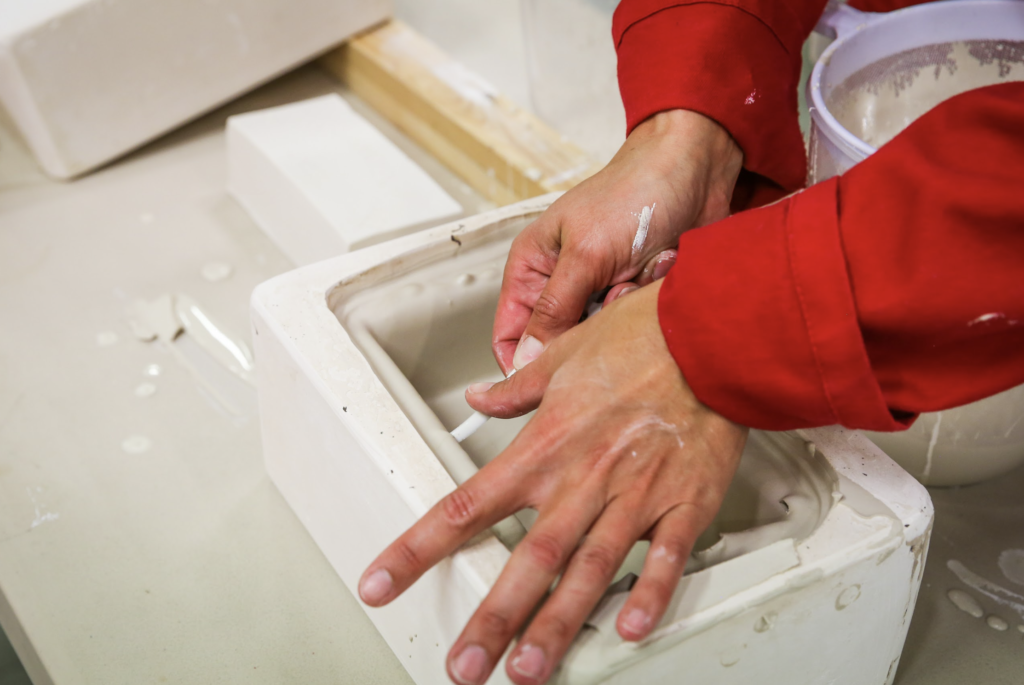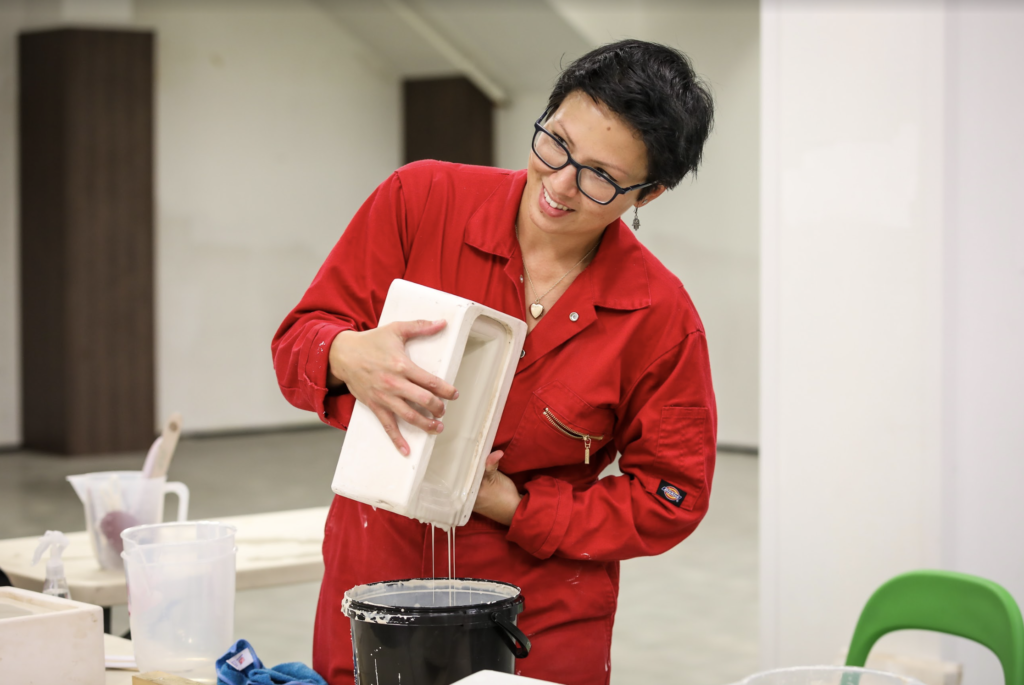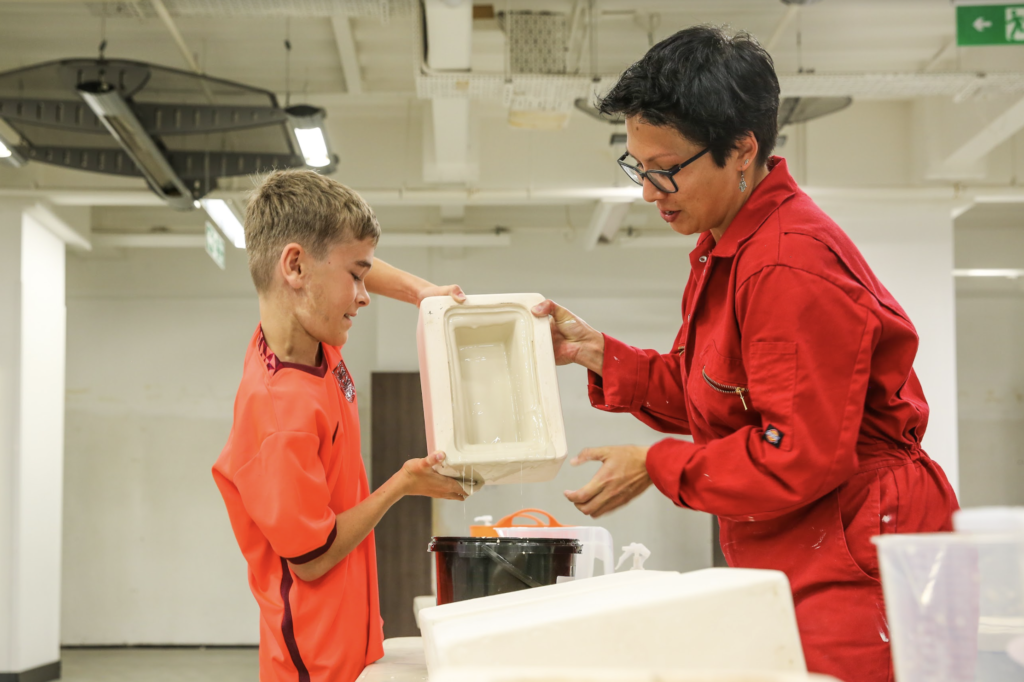The industrial heritage of Middlesbrough and Tees Valley is known around the world. The famed ‘Ironopolis’ has inspired countless works of art over the years, and offers an impressive legacy of innovation and community spirit. Artist and ceramics expert Layla Khoo has stepped into this industrial world to create a uniquely community-led exhibition.
The culmination of the year long Exchange Residency will be a public participatory art installation of ceramics created by Layla known as The Exchange, will take place in September during Middlesbrough Art Weekender within the copper dome at the uppermost point of Commerce House in Exchange Square – the former economic heart of Middlesbrough.
Part of the Celebrating Hidden Middlesbrough Programme led by Navigator North, the exhibition is part of the High Street Heritage Action Zone’s Cultural Programme, led by Historic England in partnership with Arts Council England and the National Lottery Heritage Fund.

As well as celebrating the industrial heritage of the town, the exhibition will enable members of the public to ‘buy’ works of art through donating their time to a select group of local causes, facilitated by the Teesside Charity. In this way participants can connect directly with their community, as well as take home a piece of the industrial legacy of the town.
Ahead of the exhibition, Layla shared her motivations for the project, her reflections on the innovative nature of Middlesbrough and the enduring togetherness of its communities.
Innovating Waste Into Profit
Layla has drawn inspiration for the exhibition from the scoria blocks created in the iron furnaces. Made from the molten waste produced by the smelting of steel – a material known as slag – scoria bricks made use of waste that had previously been dumped in vast quantities into landfill and the sea.

“As an artist working with a range of materials, I’m generally quite interested in how materials are used. This is where my interest in scoria blocks came from – specifically the ingenuity really of being able to transform a waste product into something that is useful and profitable in its own right,” Layla explained.
Hard wearing and completely impervious to water, scoria bricks are ideal for paving roads and back alleys – much of which can be seen across the town. They have also played a key role in helping to combat cholera outbreaks around the world, as they could be washed clean without absorbing any dirty water unlike the softer red bricks.
“The evidence of that is still scattered all over the world, but specifically all over the North East – once you start spotting them you can’t stop seeing them everywhere,” she continued. “The remnants of it are everywhere, they’re still underneath a lot of the roads that are walked on, as they were tarmaced over.”
A Sense of Community
For Layla, the industrial heritage of the town not only demonstrates ingenuity, but unearths a deeper sense of connection between local people. She explained: “As much as there is a prominent industrial background in Teesside, I wanted to explore how industry leaders interacted with the communities they’d created – especially as Middlesbrough was created extremely quickly.
“From setting up cottage hospitals to gifting the Dorman Museum to the town, industry leaders helped to foster a sense of community among locals.”
This sense of community is one that is apparent to Layla, particularly as someone not originally from the area: “The community-mindedness is – to me as an outsider – seems very much as present in the Middlesbrough communities as it was historically.
“There is still very much a sense of ownership of the town and looking after each other, which comes across quite strongly right through the history through where they are now, with the amount of community groups that there are that look after their own town.”
Engagement through Participation
While Layla’s own reflections and observations of Middlesbrough’s industrial past has shaped this exhibition, she feels that it is the participation of the public that truly brings it to life.

“The reason why I tend to work with participatory art installations, is that it makes it accessible and approachable for people,” she explained. “My aim is to create pieces where people can either make a choice or they can take an action to be part of something, so they become part of the artwork itself.”
For Layla, her artwork acts as a medium through which participants can connect with art, heritage and community: “The artwork I create is a starting point, and is only really ‘activated’ when people participate and take action to do something with it.”
“My hope is that by asking people to be a part of the exhibition, that they’ll engage with it on a deeper level. I hope that it will bring some of that history to life to see that it’s still relevant – that’s the cornerstone of what I’m interested in is bringing relevancy to these historic and heritage narratives, to show that these are still patterns of behaviour that we see today.
“We as humans don’t change that much over history – the same things are important to us: innovation and community and a sense of being part of something.”
Image Credits – Dawn McNamara
